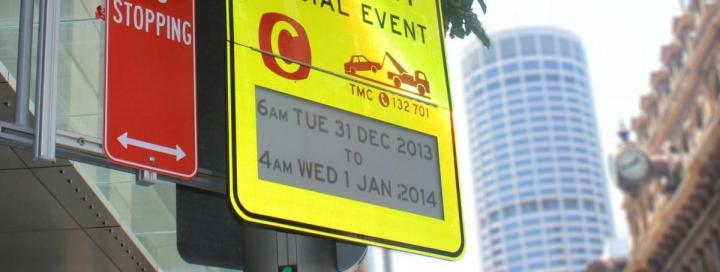
The e-ink signs were recently implemented by the Australian Road and Maritime Services (RMS), which partnered with Visionect to bring the “100 percent self-sustainable traffic signs powered by solar energy” to New South Wales. The impetus behind the technology came from officials’ frustration at having to constantly update signs, wasting money and resources on creating new products rather than recycling old ones.
An RMS spokesperson told The Register, “The technology came about through staff who saw the potential of e-reader technology to display real-time information about clearways to manage traffic flows during special events. The design, engineering, and building work to create the signs was completed by a specialized engineering team within Roads and Maritime and forms part of the agency’s commitment to improve journey efficiency through innovation.”
Not only do these wirelessly connected signs update easily, they also waste next to no electricity — as Visionect’s head of product development, Rok Zalar noted, “The hardware components are managed by server software programmed to ‘wake up’ the sign for certain pre-scheduled windows of time when the content on the sign will be changed using 3G technology. Outside of the ‘waking’ time, the traffic signs use no power.”
Temporary signs are known to be an enormous strain on city budgets, with Los Angeles spending $9.5 million a year to erect their 558,000 temporary parking restrictions signs. Following the success of the e-ink signs in Sydney, many from both the government and private sectors are hoping to expand the technology and implement it more widely and across functions. So get used to that e-ink. You may be seeing it a lot more very soon.


